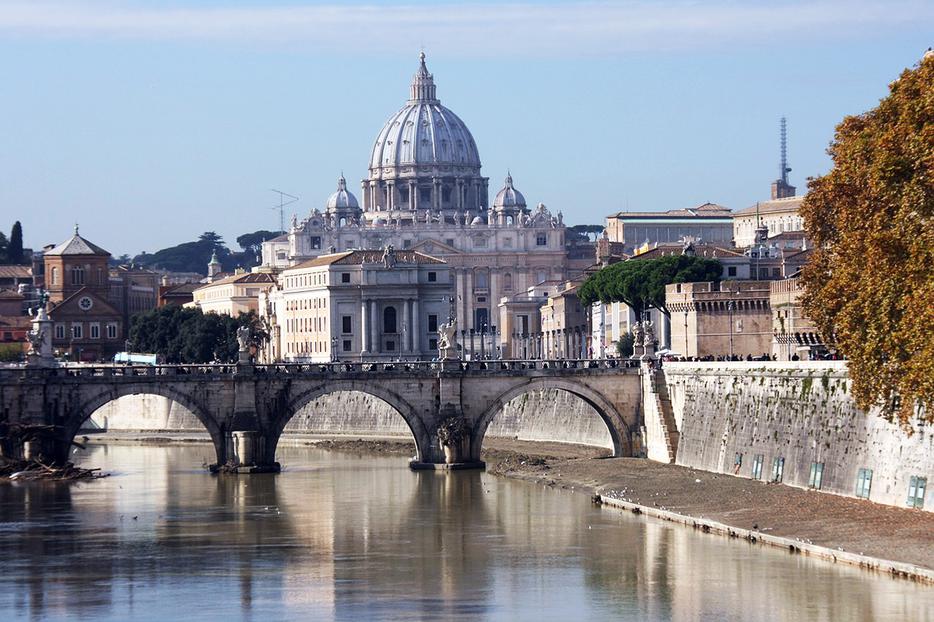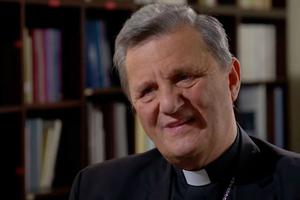Synod on Synodality’s Working Document Swings Between Two Currents
The document reflects the will to listen to issues — even contentious ones —raised at the local level, yet balances that with the awareness that no doctrinal changes can come from a synod.

The working document on the Synod on synodality, released by the Vatican on June 20, reflects an attempt to balance between two currents of this synodal process.
On the one hand, there is the will to listen to, and eventually discuss, a myriad of issues raised at the local level. On the other hand, there is an awareness that no doctrinal changes can come from a synod, that is de facto a consultive body, even if its scope has been expanded after the latest synodal reform.
This swinging between these two currents brings about a wide-ranging working document or instrumentum laboris, characteristic of Pope Francis’s typical approach to synods.
None of the contentious issues of discussion has been hidden. These issues, however, are in the second part of the document, in the worksheets that serve as a guide for the Synod’s discussion. True, the issues of married priests, of the role of women — including the establishment of the women deaconate, a sort of never-ending debate under Pope Francis’ pontificate — are in the working document, and so is the Church’s relations with LBGTQ people. However, these issues are presented as questions that sprung from some of the continental assemblies’ discussions, thereby justifying their inclusion in the text.
Obviously, the inclusion of these controversial topics gives room for further debate and also potentially for a papal decision on the matters should the final synod document propose concrete action on them. However, the continuing deliberations involve a two-year long process that closes at the end of October 2024, and thus the Pope likely will not release his final decisions, usually expressed in the form of a post-synodal apostolic exhortation before the beginning of 2025.
While the working document has raised some concerns that the synodal debates and final proposals may go too far in revisiting issues already well-defined by magisterial teaching, the document makes clear right away — and in explicit terms — that it is not a document from the magisterium or a report from a sociological survey. Instead, it proposes to be a tool to help guide the Church during a time of listening, that brings the concerns of the peripheries to the center. The document calls the local Churches a “privileged point of reference,” yet also cautions that this doesn’t mean a local Church “can live outside the relationships that unite it with all others, including that particular relationship with the Church of Rome.”
The Road to the 2023 Synod
The themes and priorities identified by the instrumentum laboris will be discussed in Rome during the first synodal assembly Oct. 4-29. Since Pope Francis’s first synod in 2014, the process of soliciting feedback has grown increasingly inclusive, seeking the involvement of all “the People of God.” In keeping with that objective, an earlier lineamenta, with pre-topics for discussion written as questionnaires, was distributed at the outset of the synodal process to help guide initial consultations at the local level.
Subsequent submissions to the synod secretariat from episcopal conferences, dicasteries, religious congregations and directly from some of the people of God contributed to the release last fall of another synodal document to guide the synod’s continental stage. Material from the seven continental documents that resulted from those discussions contributed to the drafting of the instrumentum laboris.
All the earlier documents — including those from the continental assemblies — will be part of the Synod assembly. While this allows for review of the priorities identified by the original documents, there is also a risk of a cumbersome information overload.
A New Language
The instrumentum laboris aims to frame synodality in a new language. It notes, for example that “many contributions highlight the need for a similar effort to renew the language used by the Church: in the liturgy, in preaching, in catechesis, in sacred art, as well as in all forms of communication addressed both to Faithful both to the wider public opinion, also through new and old media.”
At first glance, it seems to refer to a liturgical reform. But instead, the document underlines that “without mortifying or debasing the depth of the mystery that the Church proclaims or the richness of her tradition, the renewal of language must aim at making them accessible and attractive to the men and women of our time, without representing an obstacle that keeps them away. The inspiration comes from the “freshness of the evangelical language, the capacity for inculturation that the history of the Church exhibits and the promising experiences already underway, even in the digital environment, invite us to proceed with confidence and decision in a task of crucial importance for the effectiveness of the proclamation of the Gospel, which is the aim towards which a synodal missionary Church tends.”
The drafters of the working document also sought to emphasize that the Church is close to, and wants to listen to, everyone. For this reason, the joy and surprise of those who have been part of the synodal journey are highlighted, because that is a fundamental point of the synodal project.
At the same time the instrumentum laboris immediately clarifies that it is not “a sociological investigation” nor a “complete elaboration of a theological vision.” Indeed, the document notes, some priorities from the diocesan and continental assemblies were included there “not in the form of statements or positions taken” but of questions. It will be the Synodal Assembly itself that “will have the task of discerning the concrete steps which enable continued growth of synodal Church, steps that it will then submit to the Holy Father.”
The local Church is “a privileged point of reference,” but the Church of Rome cannot be ignored, as it “is entrusted with the service of unity through the ministry of its Pastor, who has summoned the whole Church to a Synod.”
In short, there is no democratization process. Only the possibility of speaking and being listened to in a language that seeks to be “non-divisive” precisely to help mutual understanding.
Again the document grapples with the two currents, on one hand “how to create a synodal path” which listens to all the concerns and desires of the people of God, and on the other “how this can be reconciled with the universal Church and the role of the Pope.” Ultimately it states, “the choice of the Synod is to maintain this central role of Rome, and to ask for unity, to be cemented with prayer.”
The Importance of Prayer
In presenting the instrumentum laboris, Jesuit Father Giacomo Costa, consultor of the General Secretariat of the Synod, was keen to underline that in the earlier discussions the need to use the method of “spiritual conversation” emerged, which allows us to understand the tensions and differences without becoming polarized — an “absolutely unexpected” process.
But, above all, he wanted to underline that the Synod has a spiritual dimension. Therefore, Father Costa said, it is crucial that the Synod “opens with an ecumenical vigil and retreat led by Father Timothy Radcliffe” and that the assembly will begin with “the initial Eucharistic celebration the day of St. Francis and concludes with a Eucharistic celebration.” The synodal workshops also will be interspersed with “longer moments of prayer.”
The Risks
According to Cardinal Mario Grech, secretary general of the Synod, the consultations showed that “where the bishops accompanied the synodal process, deeper reflections emerged” and lamented hearing at times, what he considers “an insult,” that the people are incapable of depth.
Cardinal Jean-Claude Hollerich, the general rapporteur of the Synod, instead highlighted the instrumentum laboris “is not a document which, after several amendments by the Synod participants, should lead to a final version to be voted on at the end of the Synod,” nor an “attempt to answer all the questions about synodality,” but rather “the result of a synodal process at all levels, which leads to many questions which the participants of the Synod will be able to answer.”
In short, the working document is the guide for the Synod members and everything will flow from there. Of course, the Pope does not indicate that he wants to change things. However, the possibility remains of gestures which, in their vagueness, can be considered ambivalent and therefore used to try to bring about some form of change in the Church. The problem will not be the Synod but how to manage the discussion groups, especially those controversial topics which are linked to the German Synodal Path and even aim at a doctrinal change. It will not be easy.
Andrea Gagliarducci is an Italian journalist for Catholic News Agency and Vatican analyst for ACI Stampa. He is a contributor to the Register.
- Keywords:
- synod on synodality
















